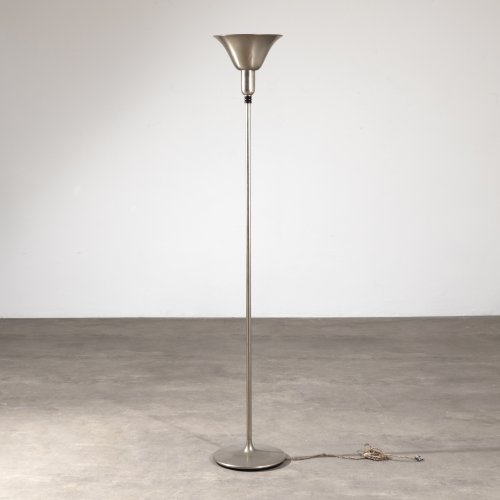Biography
Sigfried Giedion (Prague 1888 - 1968 Zurich) The art historian Sigfried Giedion was first confronted with the avant-garde in 1923 when he met Le Corbusier during the 'Bauhaus Week' in Weimar. Together with Le Corbusier, he founded the architecture congress 'Congrès Internationaux d'Architecture Moderne' (CIAM) in 1928. With his writing 'Befreites Wohnen' he propagated a consistently modern style of living, for which Wohnbedarf AG, founded two years later by Giedion in cooperation with the designer Werner Moser and the businessman Rudolf Graber in Zurich, supplied the appropriate furnishings. It was regarded as the central point for contemporary living needs and was a collection point for the achievements of modern Swiss type furniture. In 1932, Giedion was a consultant to the bronze goods factory BAG Turgi, made suggestions for reorganizing the company and, together with the Bauhaus student Hin Bredendieck, developed, among other things, the mass-produced 'Indi lamp', the standard lamp for new living needs. This lamp embodied the quality of anonymous industrial products and fit into any living space. Indirect room lighting also played an increasingly important role. Direct lighting was only used where it was really needed, e.g. for working. The 'Indi-Lamp' with sliding reading arms provides a fine example of the BAG principles, both in terms of the separation of indirect and direct lighting and the shape of the shade; the reflector insert was a draft of a previous model that had been revised from a technical point of view. As the initiator, theoretician and propagandist of the New Bauhaus, Giedion made himself heard internationally. His writings were soon among the standard works of modern architectural history.

